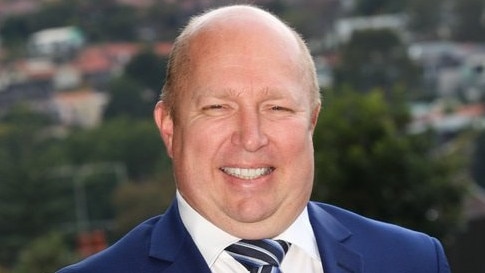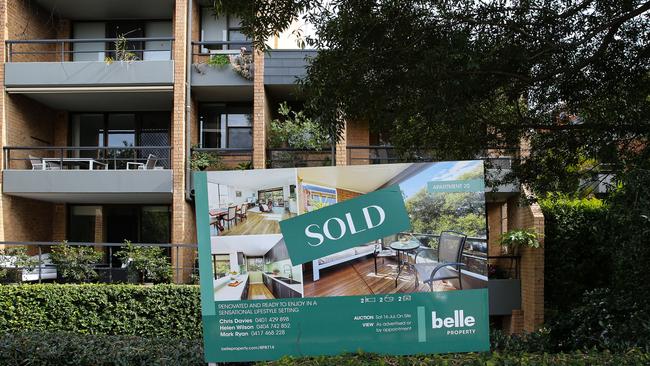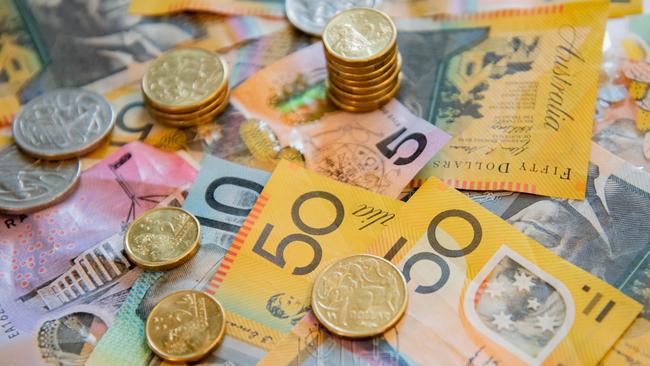Distressed property listings soar as seven consecutive interest rate rises bite
Australians were hit with their second consecutive rate rise this month and the signs of distress are starting to show as people struggle.

Interest Rates
Don't miss out on the headlines from Interest Rates. Followed categories will be added to My News.
Desperate homeowners slammed by seven consecutive rate rises are being forced to sell up with the number of distressed listings nationwide jumping by more than 15 per cent since May, new research has shown.
Interest rates have risen from a record low of 0.1 per cent to 2.85 per cent in November and some homeowners are struggling to meet mortgage repayments that have risen anywhere between $760 to $1510 a month on average.
The Reserve Bank of Australia pushed through another 0.25 per cent increase to interest rates this week, which could heap further pressure on Australians and force even more to sell up in a hurry.
Queensland saw the biggest rise in the number of properties selling under distressed conditions jumping from 2203 in May to 2791 in October, an increase of 26 per cent or 588 homes, according SQM Research analysis.
Next up was NSW with distressed homes on the market sitting at 912 in May but rising to 1265 an increase of 38 per cent, while in Victoria there were 99 more distressed properties up by 14.9 per cent to 765 homes.
Nationally, the number of distressed properties on the market rose from 5753 in May to 6658 in October, an overall increase of 15 per cent.
How can inflation cause rising interest rates? Read Compare Money's guide >

Tasmania recorded 14 more properties going to market, while ACT and South Australia had very minor increases.
In the Northern Territory and Western Australia, the number of distressed properties actually dropped in the last six months.
Louis Christopher, managing director of SQM Research, said seven straight rate rises are starting to “bite”.
“As we get more rate rises, the number of distressed properties will rise as more households struggle to keep up with their mortgage repayments,” he told the Australian Financial Review.
However, struggles are being felt more keenly in some capitals such as Brisbane, which has seen a bigger decline in house prices in recent months, with the number of distressed listings jumping up in just four weeks to 1000 properties.

Otherwise Sydney saw distressed listings rise by 3.1 per cent to 564, while in Melbourne they went up by 1.5 per cent to 41 and by 11.2 per cent to 119 in Adelaide.
Property listings can hint at a distressed sale with terms such as ‘desperate vendor’ or ‘must sell’ or even more explicitly such as advertising ‘mortgagee in possession’, ‘bank forced sale’ or ‘forced property sale’.
Often sellers are forced to accept a lower asking price due to their circumstances, while they could face further challenges as buyers become more cautious and the number of properties on the market rise.

The number of properties sitting on the market for more than six months is also on the rise up by 3.3 per cent in Sydney in October to 4650 homes and 5.9 per cent in Brisbane to 2378 properties.
Melbourne has also seen properties going unsold for over six months increase by 1.5 per cent to 7082 and in Perth its up by 4247 to 1.8 per cent.
Rising interest rates and falling house prices will lock some borrowers in with a limited ability to lower their borrowing costs through refinancing but for those stuck in mortgage prison, there might still be ways to cut loan costs, according to Canstar.
A growing number of mortgage holders have switched lenders recently to cut their loan costs with the Australian Bureau of Statistics reporting that a record $12.8 billion in owner-occupied loans were refinanced to a new lender in August alone.

However, not everyone wanting to cut their loan cost is able to refinance their loan, says Canstar’s editor-at-large and money expert, Effie Zahos.
“An escape from rising interest rates is to refinance to a lower rate loan and cut monthly repayments along with the interest paid over the life of the loan,” she said.
“If the price of your property has fallen and pushed your loan-to-valuation ratio above the 80 per cent mark, you could find that when you go to refinance to secure a lower rate you won’t be able to without having to pay costly lenders mortgage insurance.
“This is an expense that no borrower wants to incur at the best of times, let alone when living costs are steep and interest rates are still rising.”

Borrowers who are already stuck in mortgage prison can potentially still do something about it to help lower their loan costs, she added.
“The easiest option is to downsize your loan. Call your lender and ask to speak to their mortgage variation specialist to see if there is a more suitable, cheaper alternative loan they can offer you,” she said.
“You may still be able to refinance to a new lender and loan if your loan-to-value ratio has increased but the options will be limited and you’ll likely have to pay lenders mortgage insurance.
“Look for lenders mortgage insurance discounts. While not mainstream there are some lenders that waive lenders mortgage insurance for certain professions.
“Keep in mind that property valuation results can also differ from bank to bank. Worth doing your research, checking on a comparison site and chatting with a broker to compare notes.”

New analysis has also revealed that homeowners who fixed their mortgage rate when they were at record lows saved as much $20,000 compared to those who stayed on a variable loan.
Someone who fixed for two years in July last year would save $20,353 in interest repayments compared to someone on a variable rate, RateCity modelling showed.
For those who scored a fixed rate of 1.94 per cent, they will pay $18,815 in interest by 2023, compared to homeowners on variable rates, who will fork out a whopping $39,168.
The RateCity data assumes homeowners have a $500,000 mortgage and have another 25 years to pay it off.
Originally published as Distressed property listings soar as seven consecutive interest rate rises bite





